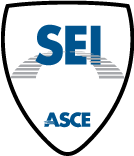Fortunately, I do not have enough fingers to count all the things for which I am thankful — and one of the biggest that I want to make sure you are aware of is how grateful we are to welcome new SEI President is Stephanie Slocum, P.E. to the helm. If you missed this big news, be sure to read about her goals and ideas and you will learn much more and will most certainly add the first woman SEI President to your list of things to be grateful for! As we launch into another year at SEI, we are preparing to focus on member engagement in many ways. Engagement with committee members, event attendees — as well as the majority of you who continue to support SEI with dues and donations — with increased and improved communications. As we pivot to focus on what is ahead, I wanted to take a moment to reflect on a few aspects of our current work that advance the profession, which you can use to advance yours.
As you know, SEI’s superpower is in developing cutting-edge and widely adopted structural design standards. Continual investment in the committees and supporting research to improve structural standards is always a priority. Over the past few years, SEI has led several research roadmap workshops to identify and prioritize needed investments in critical aspects of understanding natural hazards. Supported with funding from the National Institute for Standards and Technology (NIST), the recently published State of the Art and Research Needs in Design for Tornadoes to Improve Community Resilience: Structural Engineering Institute Workshop Reportis now available as a free download. The publication outlines prioritized needs in the field of tornado design — especially to improve community resilience against this destructive natural hazard. SEI also developed NIST-funded research roadmaps for Performance Based Wind Design and Computational Wind Engineering, also available as free downloads. Special thanks to Project Director Don Scott, P.E., S.E., F.SEI, F.ASCE for his leadership with all these reports. While these focus on the wind hazard, SEI is working on projects to support additional natural hazards as well as the impacts on those hazards from changes in the climate. SEI committees are working hard to develop resources and tools for practitioners and academics and to raise awareness. For example, the SEI Sustainability Committee is planning the inaugural SEI Structural Engineering Sustainability Symposium for early 2025 — a free, virtual event planned for Feb. 5, 2025. Let us know you are interested so we can provide you with details as they develop.
Finally, you will see a renewed effort educating the profession on SEI standards and committee work. ASCE/SEI has scheduled a series of webinars for the 2023 edition of ASCE/SEI 41 Seismic Evaluation and Retrofit of Existing Buildings beginning on Nov. 21 on ASCE/SEI 41-23 Tier 1 and Tier 2 Updates, with Peter Somers, P.E., S.E.
I am indeed grateful to you all (see not nearly enough fingers!) and hope you enjoy the good aspects of being a part of SEI! Drop us a note to [email protected] — let us know what you think, what you would like to learn about, or other ideas you have for SEI activities.
Jennifer Goupil, P.E., F.SEI, F.ASCE
Managing Director of the Structural Engineering Institute
ASCE Chief Resilience Officer


